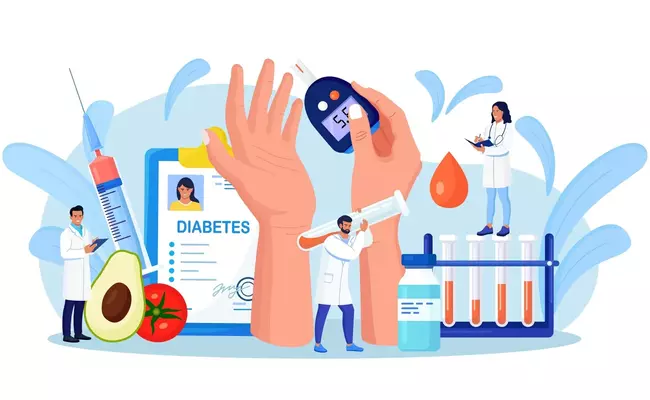Diabetes genes

If you tested your DNA with a personal genomics service like 23andMe, AncestryDNA, FamilyTreeDNA, MyHeritage or another testing company, you can learn more about your risk factors for hundreds of diseases. By clicking the button above ⬆️, you can upload your raw DNA data file and receive a personalized 250-page health report with research links that is the most comprehensive.
Diabetes mellitus is marked by a complex interplay of genetic, epigenetic, and environmental factors. It's among the fastest-growing illnesses worldwide with an expected 783 million adults affected by 2045. The condition gives rise to perilous macrovascular outcomes such as cerebrovascular disease, cardiovascular disease, peripheral vascular illness along with microvascular complications like retinopathy or neuropathy leading to mortality risk increase in people afflicted with diabetes resulting in blindness & kidney issues adversely affecting their quality of life. Glycemic management and clinical risks alone can't predict the onset of vascular problems; instead multiple genetic studies have revealed that both diabetes itself alongside its associated aftermaths stem from hereditary components within individuals who suffer them.
T1DM, also referred to as IDDM or juvenile-onset diabetes, results from the destruction of pancreatic beta cells by an autoimmune response mediated by T-cells. This reduces insulin production and constitutes 5%-10% of diagnosed cases in adults but accounts for approximately 80%-90% among children and adolescents. The assault on beta cells is driven primarily through interaction with autoantigens leading ultimately to their death at varying rates dependent upon age; rapid loss often occurs during childhood whereas LADA affects adults gradually causing little-to-no secretion resulting in reliance upon external sources such as synthetic insulin supplementation just for survival purposes.
T2DM stands as the prevalent form of diabetes, covering an approximate 90% of all cases worldwide. It is identified by insulin resistance-induced insensitivity towards insulin, coupled with insufficient production from pancreatic beta-cells and their eventual destruction. Insulin resistance denoted a heightened need for this hormone in target tissues that could not be fulfilled due to the abnormalities found within beta cells, ultimately resulting in hyperglycemia. Various factors such as genetics and environmental triggers like stress levels or lethargy contribute to T2DM's complexity and manifestation alike touching several fronts simultaneously. This method involves selecting candidate genes based on prior knowledge of their biological function, position, or potential relevance to a given phenotype, and is driven by hypotheses. It is particularly useful in studies where individuals are not related. Candidate gene studies have identified several genes associated with T2DM, including IRS1, PPARG, IRS2, WFS1, KCNJ11, HNF1A, and HNF1B. Similarly, association studies for T1DM have identified four non-HLA genes with established risk loci: INS, CTLA4, PTPN22, and HLA. The most common candidate genes for gestational DM are TCF7L2, MTNR1B, CDKAL1, IRS1, and KCNQ1, while other genes are specific to certain ethnic groups. In contrast, MODY is inherited in an autosomal dominant pattern and is caused by mutations in transcription factor genes such as HNF4, HNF1, IPF1, and neuro-D1.